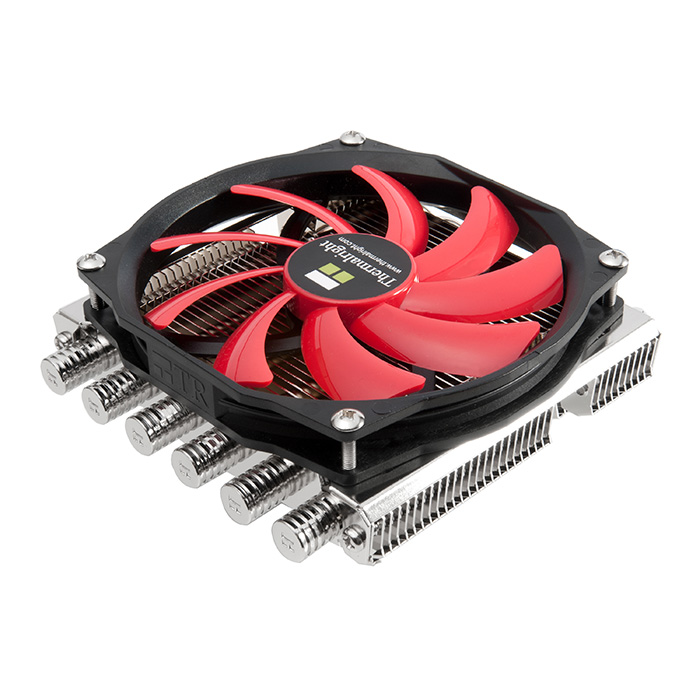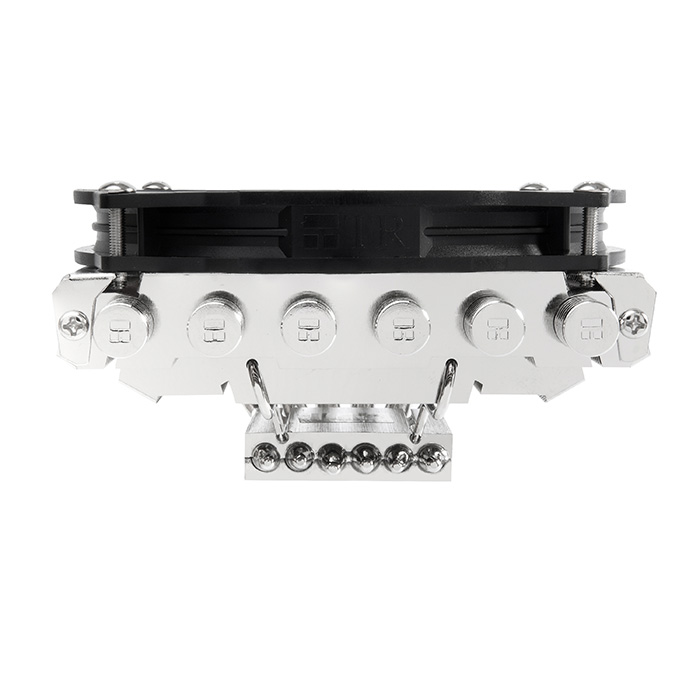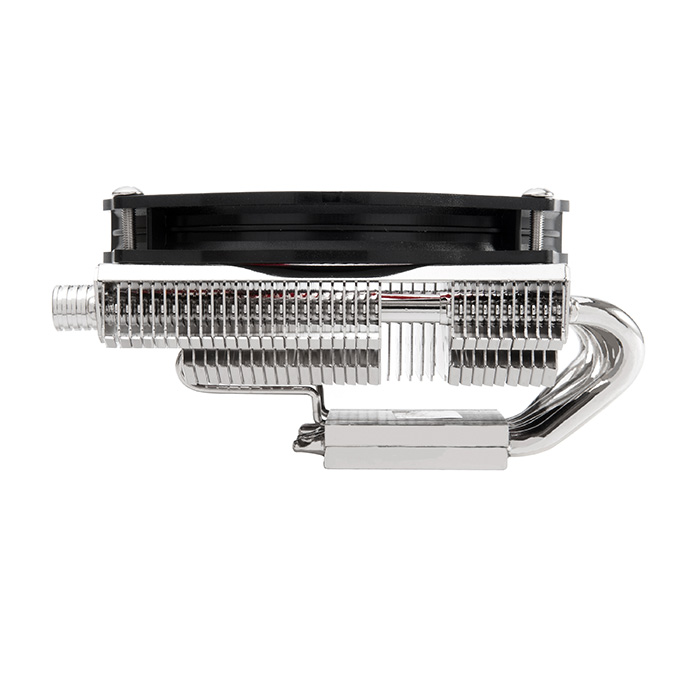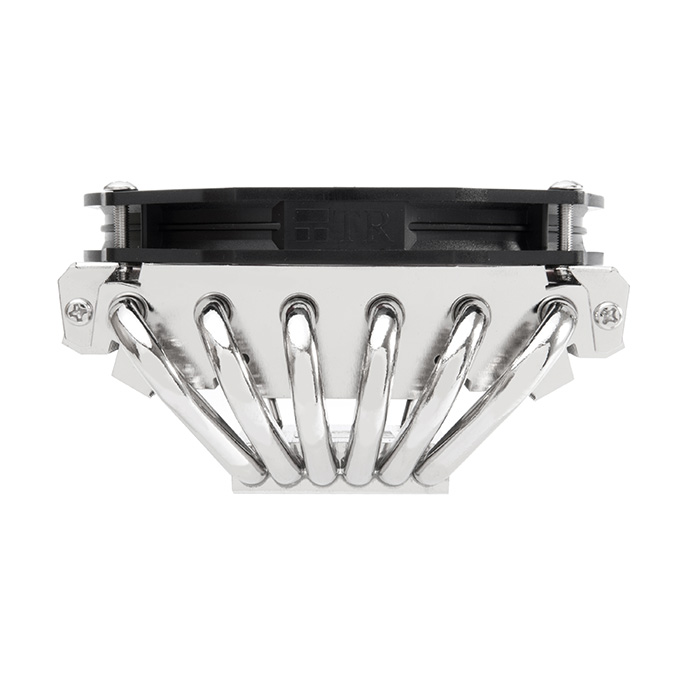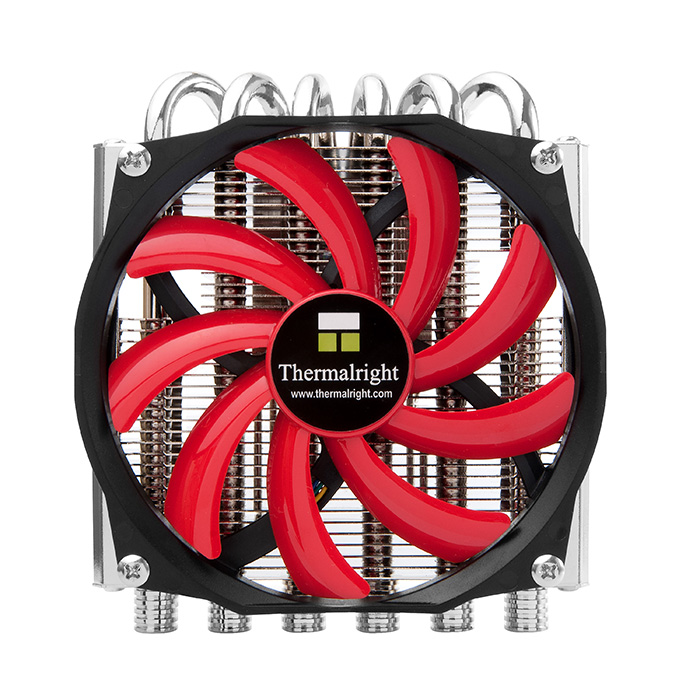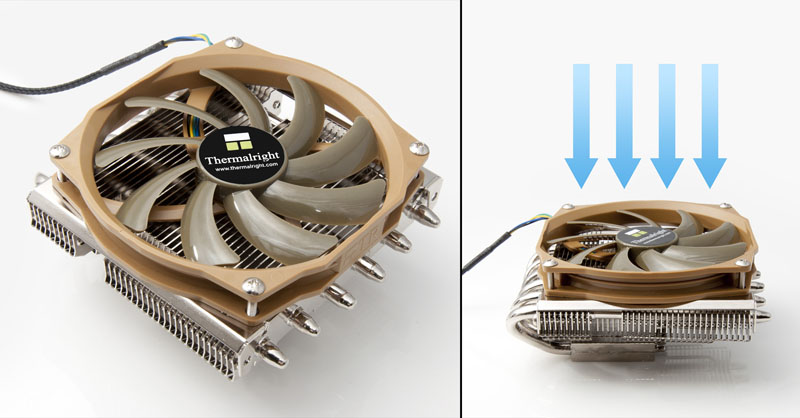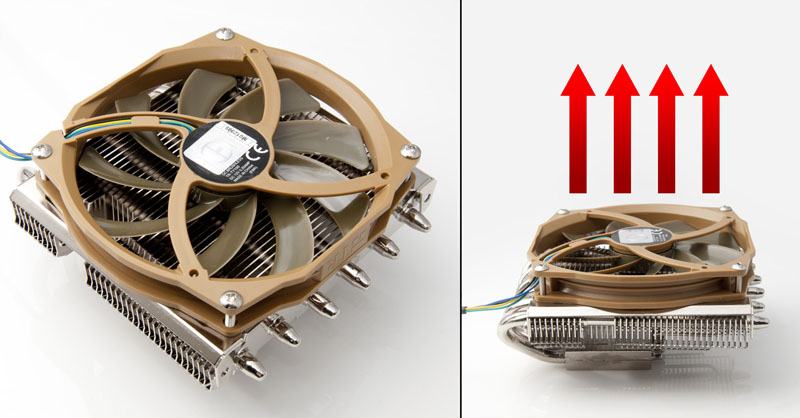Description

We know that cooler choice has long been a headache for ITX and HTPC system builders. Stock CPU heatsinks and coolers are hot and noisy, while high quality coolers usually either don’t fit the case or interferes with your GPU. So finding the perfect balance of size, thermal performance and noise on IT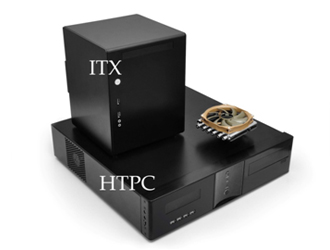 X and HTPC systems has never been easy, until now!
X and HTPC systems has never been easy, until now!
The Thermalright AXP-100 is here! This latest creation by Thermalright is only a mere 58mm (2.28 inches) in height including the bundled TY-100 high performance PWM fan. This height provides almost full compatibility with HTPC and ITX cases on the market. Thermalright.com will also be displaying a full list of case compatibility on our product page.

Besides supporting all modern CPU sockets and platforms, system and main board compatibility is also no problem for the AXP-100. AXP-100’s small form factor has minimal interference with tall heatsink RAM, full length GPU cards and PCI-E slots.
The AXP-100 uses a jaw dropping number of six 6mm heatpipes, which usually only appears on mammoth tower heatsinks. The included Enhanced Fan Mount also allows power users to replace the included TY-100 100mm high performance PWM fan, with regular aftermarket 120mm fans or Thermalright’s award winning TY-100R series of 140mm fans. The Enhanced Fan Mount is also X/Y axis adjustable, providing the best component and PCI-E compatibility when you go XL on your fan!

The AXP-100 is the complete thermal upgrade solution for your next ITX and HTPC build. Use the best heatsink technology to bring a no compromises cooling experience to systems builders. Make your next system truly the coolest piece of tech there is.

Technical Spec :
Heatsink Specifications:
Dimension: L105 mm x W121 mm x H44 mm
Weight: 320g
Heat pipes: 6mm heatpipe x 6 units
Fin: T = 0.5 mm ; Gap = 1.9 mm
Fin Pcs: 28 6 5 = 39 pcs
Copper Base: C1100 Pure copper nickel plated
Motherboard to Fin: 27 8 = 35 mm
TY-100R FAN Spec:
Dimension: L108 mm x W101 mm x H14 mm
Weight: 40g
Rated Speed: 900~2500RPM±15%
Noise Level: 22~30 dBA
Air Flow: 16.0~44.5CFM Click to enlarge
Thermal design power: 180watt
| Motherboard Compatibility Intel: Socket LGA 775/1150/1151/1155/1156/1366/2011/2011-3 AMD: Socket AM2/AM2 /AM3/AM3 /AM4/FM1/FM2/FM2 |
| FAQ 1 |
| Question :When I install the AXP-100 on a ITX mainboard, but also want to install a TY-100R series fan, how can I avoid interfering the graphics card with the larger fan? |
Answer : The Enhanced Fan Mount bundled with the AXP-100 can be adjusted in all four directions. So when you use a larger fan like the TY-100R, you can slide the Enhanced Fan Mount to the opposite direction to avoid the graphics card or tall heatsink RAM.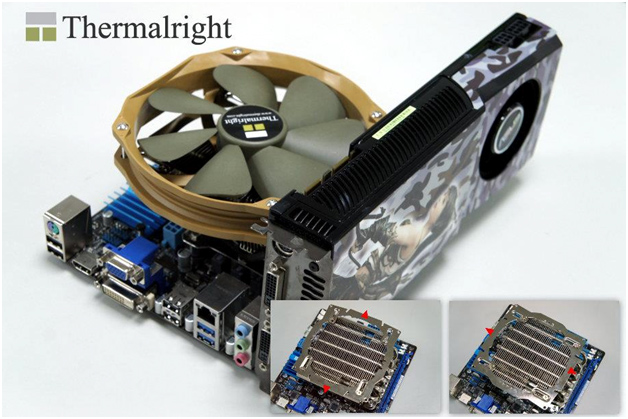 |

